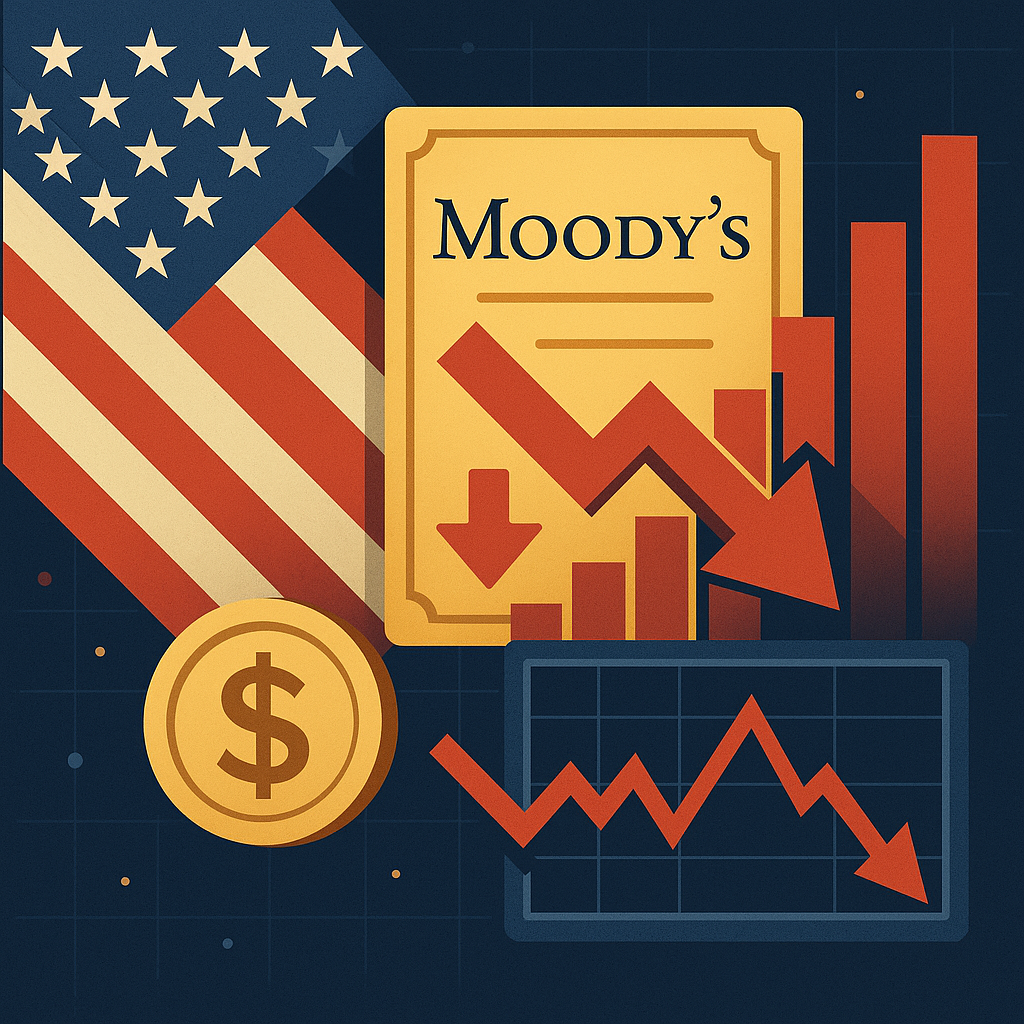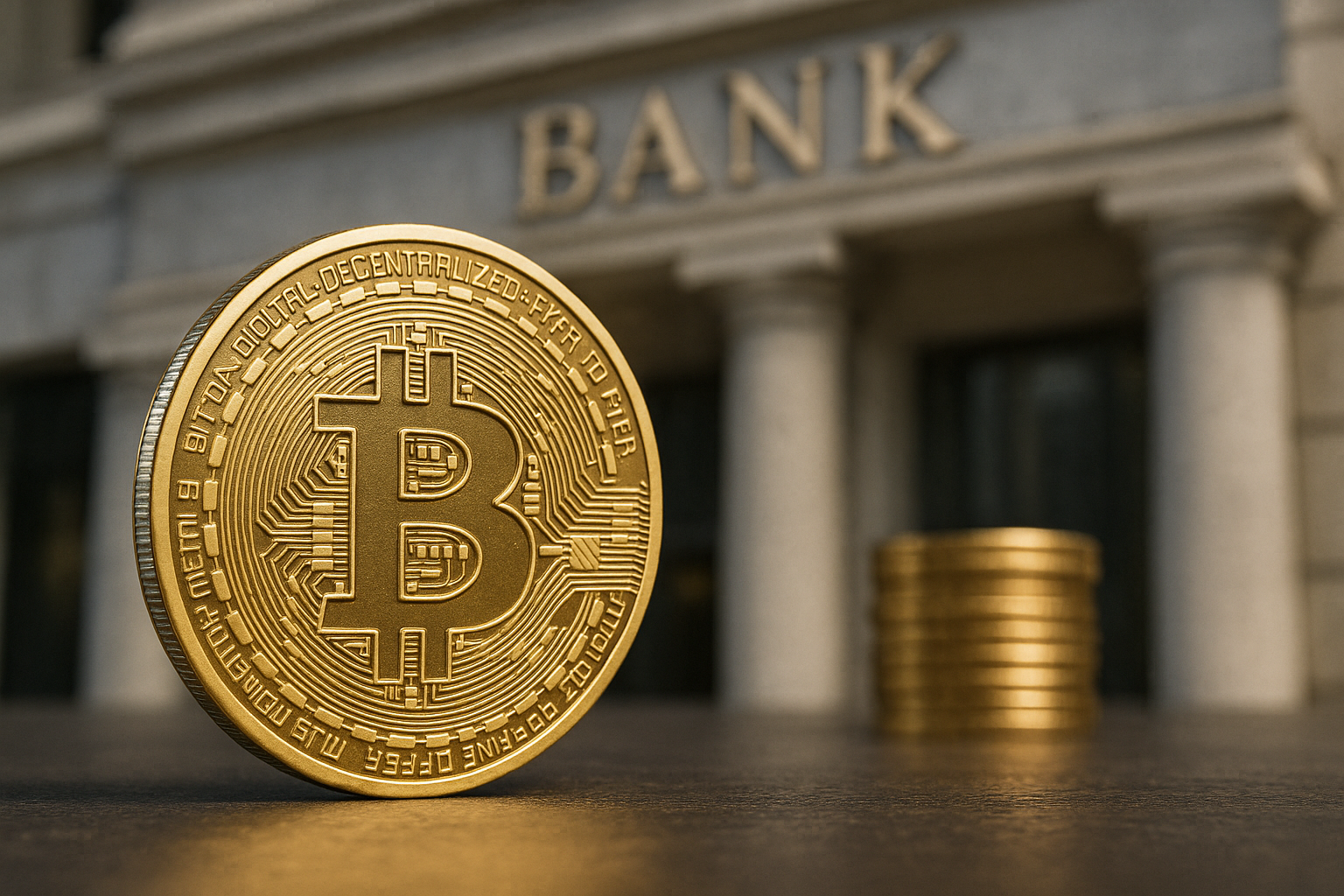The U.S. has just received a wake-up call from Wall Street’s watchdogs. Moody’s downgrade of the nation’s sovereign credit rating is rattling markets, spooking investors, and reigniting fears over fiscal discipline in the world’s largest economy.
📉 A Credit Downgrade That’s Echoing Across Global Markets
Moody’s Investors Service downgraded the long-term sovereign credit rating of the United States, citing growing concerns about fiscal deficits, rising interest costs, and political gridlock in Washington. The downgrade triggered an immediate reaction across financial markets, sparking a broad-based sell-off in U.S. government bonds, weakening the U.S. dollar, and weighing heavily on equities across major indices.
According to Bloomberg, the benchmark 10-year Treasury yield rose as investors dumped government debt, while the S&P 500 closed down nearly 1.5%, erasing prior weekly gains.
This marks the second major downgrade in recent years, following Fitch’s 2023 decision to cut the U.S. rating—a sign that rating agencies are increasingly uneasy about America’s fiscal trajectory.
💬 Why This Matters for Investors
The downgrade is more than just a symbolic slap on the wrist—it underscores structural vulnerabilities in the U.S. economy that may influence portfolio performance for years to come. Key concerns include:
- High and Rising National Debt: The U.S. debt-to-GDP ratio now exceeds 120%, and interest payments are consuming a larger share of the federal budget.
- Political Paralysis: Ongoing brinkmanship over debt ceilings and fiscal spending reduces investor confidence in Washington’s ability to manage long-term liabilities.
- Inflationary Pressures: Downgrade fears can lead to a weaker dollar and higher import costs, potentially reigniting inflation just as the Fed aims for stabilization.
A weakened sovereign rating typically increases borrowing costs for the government—and indirectly for businesses and consumers—tightening credit conditions across the board.
🧐 Expert Reactions and Market Implications
In comments to Reuters, JP Morgan strategist Michael Feroli noted that while the downgrade doesn’t signal an imminent default risk, it “reflects long-term fiscal slippage that markets can’t ignore.” Meanwhile, Fortune highlighted that foreign investors may begin reallocating capital away from U.S. assets amid rating uncertainty.
Historically, credit downgrades can also have psychological impacts, triggering algorithmic selling and risk-off sentiment, particularly in sectors sensitive to interest rates such as tech, real estate, and consumer discretionary.
🔭 Future Trends to Watch
- Treasury Volatility: Expect continued turbulence in government bond markets as the downgrade could affect demand and pricing dynamics.
- Safe-Haven Rotation: With U.S. credit now under a cloud, investors may look to gold, Swiss francs, or even Bitcoin as alternate stores of value.
- Global Contagion Risks: If the U.S. faces higher borrowing costs, developing economies could see ripple effects, especially those reliant on dollar-denominated debt.
The bigger picture? If the U.S. loses its shine as a risk-free anchor, global capital flows could be recalibrated in favor of more fiscally prudent or economically stable jurisdictions.
💡 Key Investment Insight
This downgrade is a call for portfolio diversification. Investors should consider reducing overexposure to U.S. government debt and large-cap equities while increasing allocations to non-correlated assets like commodities, international bonds, and alternative investments. Keep an eye on dollar-denominated ETFs, global macro hedge funds, and gold-backed assets as potential hedges.
📣 Stay Informed, Stay Ahead
Volatility is the new normal—but informed investors are better positioned to capitalize on market dislocations. Follow MoneyNews.Today for in-depth analysis, real-time reactions, and expert strategies to help you stay ahead of the next major shift in global markets.





